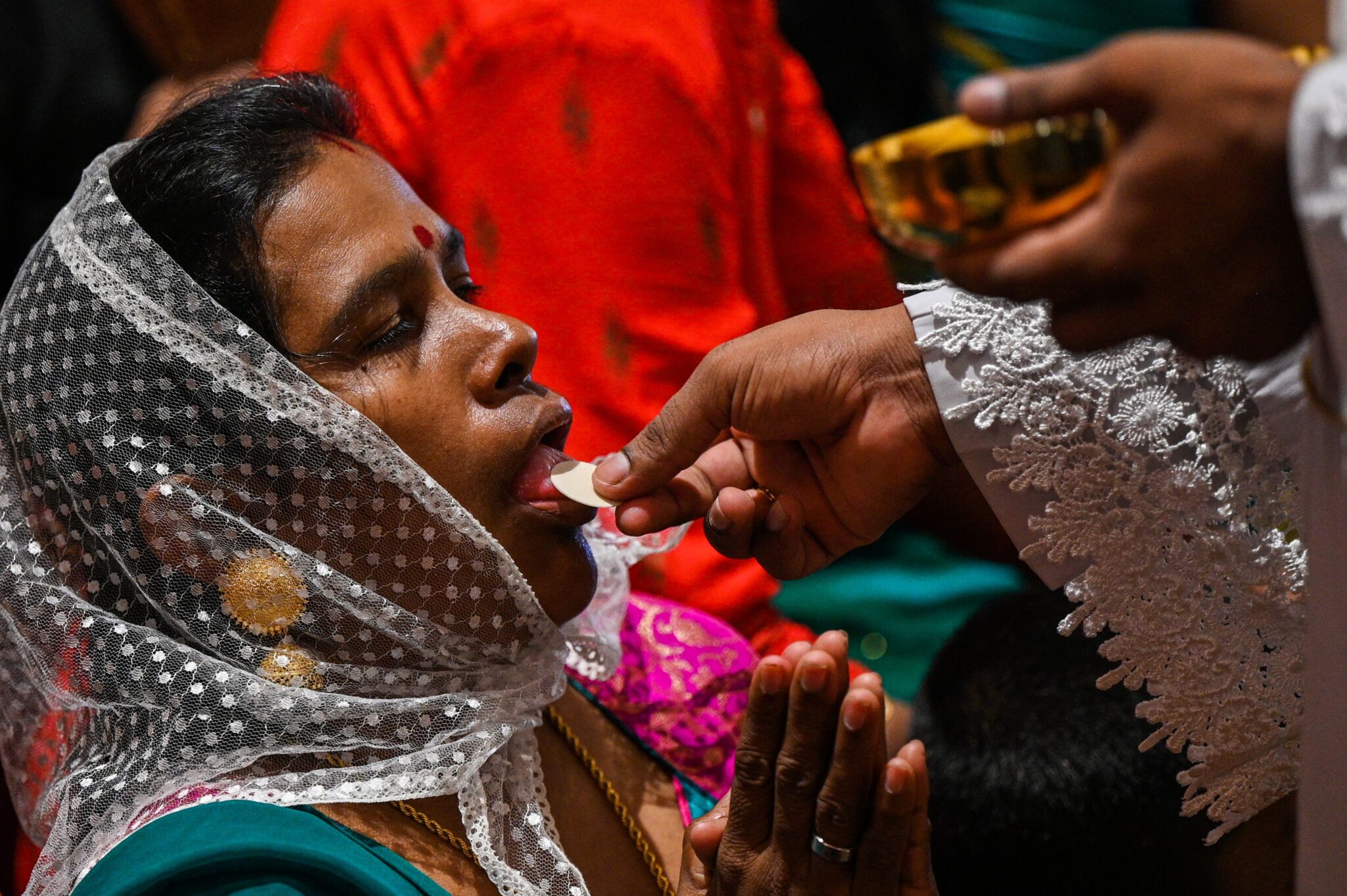<em>A Herald reader reflects on a recent experience.</em>
At the church which I attend, Communion is received kneeling, on the tongue. “Corpus Christi,” said the priest, and held the Host in front of my face, but out of reach. There was a pause.
“Amen,” he said, pointedly. Open mouthed, I said nothing. For a second, this silent argument continued, as the Host was suspended in space by the fingers of the priest. In that second, the crisis in the Church seemed to sum itself up before my eyes.
Then he placed the Host on my tongue. “You say ‘Amen’,” he said. Loudly, I thought, but perhaps no one else heard.
No one outside the Church could possibly guess what was at stake. Most people inside it would not guess either, and among those who read this who already understand, many will no doubt consider it a trifle, a matter of scruple, not something over which to have such a face-off.
When the Reformation dawned, it was many centuries since the faithful had received Communion in anything but silence. Saint Augustine taught in Sermon 272:
“Audis enim, ‘Corpus Christi’ et respondes, ‘Amen.’” – “For you hear ‘Corpus Christi’, and you reply ‘Amen.’”
But this practice had vanished without trace, so much so that even Cranmer did not think of reintroducing it into the Book of Common Prayer.
And then came the Second Vatican Council, with Bugnini in its wake. The Bugninian Dream was a Mass which Protestants and Catholics could both attend, each with their private thoughts and interpretations, unmolested by the others’. The hunt was on for liturgical common ground. At some point a conversation must have been held between liturgical archaeologists about that Amen, for it was now introduced not only into the new rite of Mass, but also into the new Anglican service of Holy Communion. “Here,” someone must have said, “is an excellent place for Anglican-Catholic convergence. Surely no Catholic can possibly object to a practice attested by Saint Augustine, and surely this Amen is satisfactory to any Anglican!”
Indeed it is. For if there is one great battle that divides not only Christianity but the whole of society, it is the question of whether Truth exists objectively, in and of itself, or whether Truth is a matter of opinion and faith. Just as in society biological sex is opposed to gender identification so, at the Eucharist, Transubstantiation is opposed to Consubstantiation and to symbolism. A couple of generations ago, the Catholic Church was the safe stronghold against such relativism, but now the enemy has breached the ramparts and even the garrison is giving up the fight.
Inside the stronghold, some have already surrendered and now hold the Mass to be a symbolic act, much like a Cenotaph Parade. But even for those, both Catholic and Protestant, who believe in the Real Presence of Christ in the Host, there is still a division. For Protestants, and now also for protestantised Catholics, this depends upon the faith of the communicant. For these, the “Amen” at the moment of Communion is a great comfort. But for those who see in the Host something of tremendous power, unaffected and unaffectable by any faith we may have or express, this is not the moment to say “Amen”. It is no accident that the faithful fell silent for so many centuries at this point.
So if you are reading this, Father, I make no apology – even though I am sorry that the times in which we live placed us in opposition at such a moment. I am however grateful that you did not leave me kneeling, open mouthed and sacramentless, as some priests might have. I hope that one day the Mass of our forefathers will be universally restored to the altars of the Roman church, so that the law of what must be prayed once again corresponds to the law of what must be believed.



